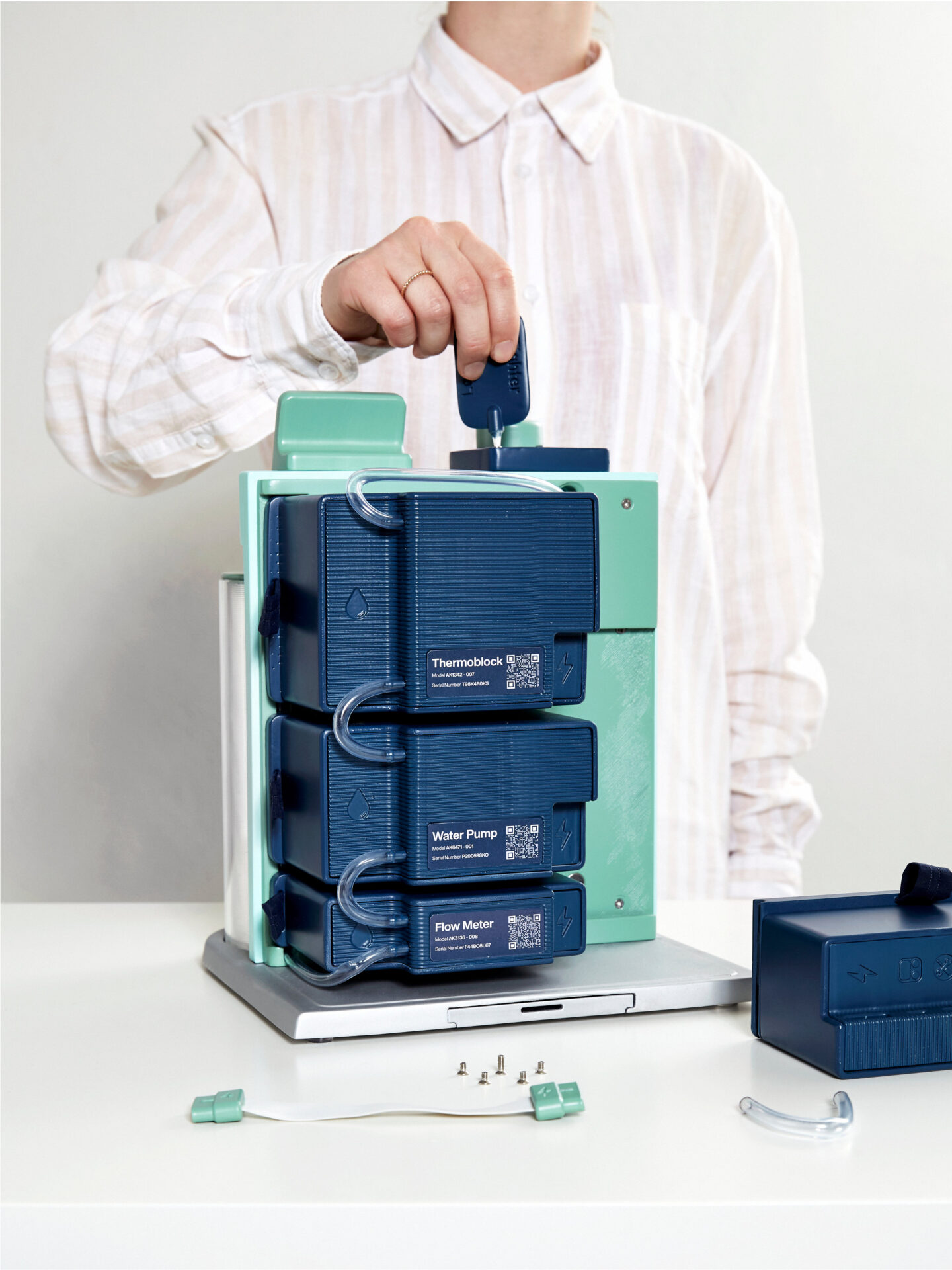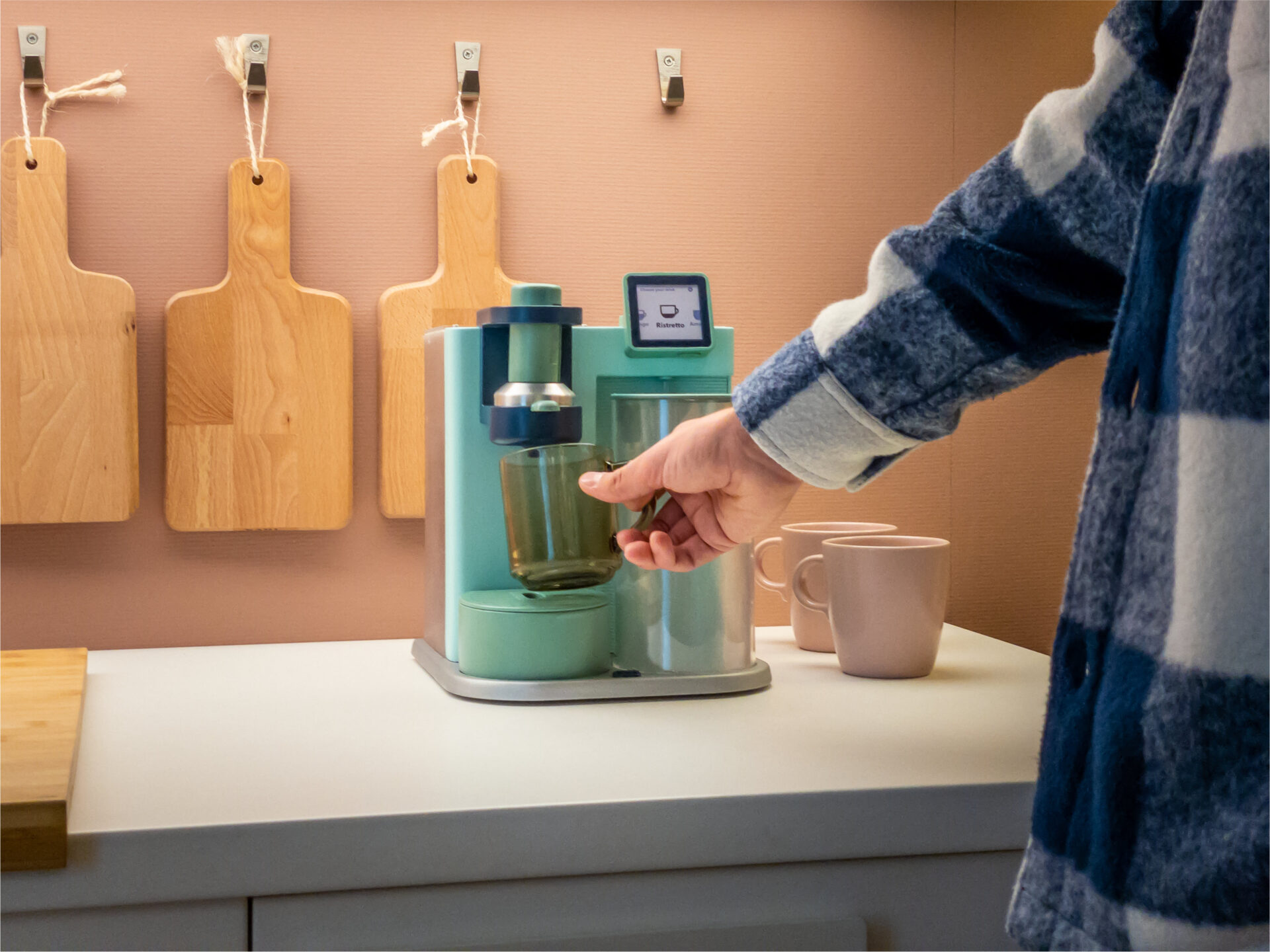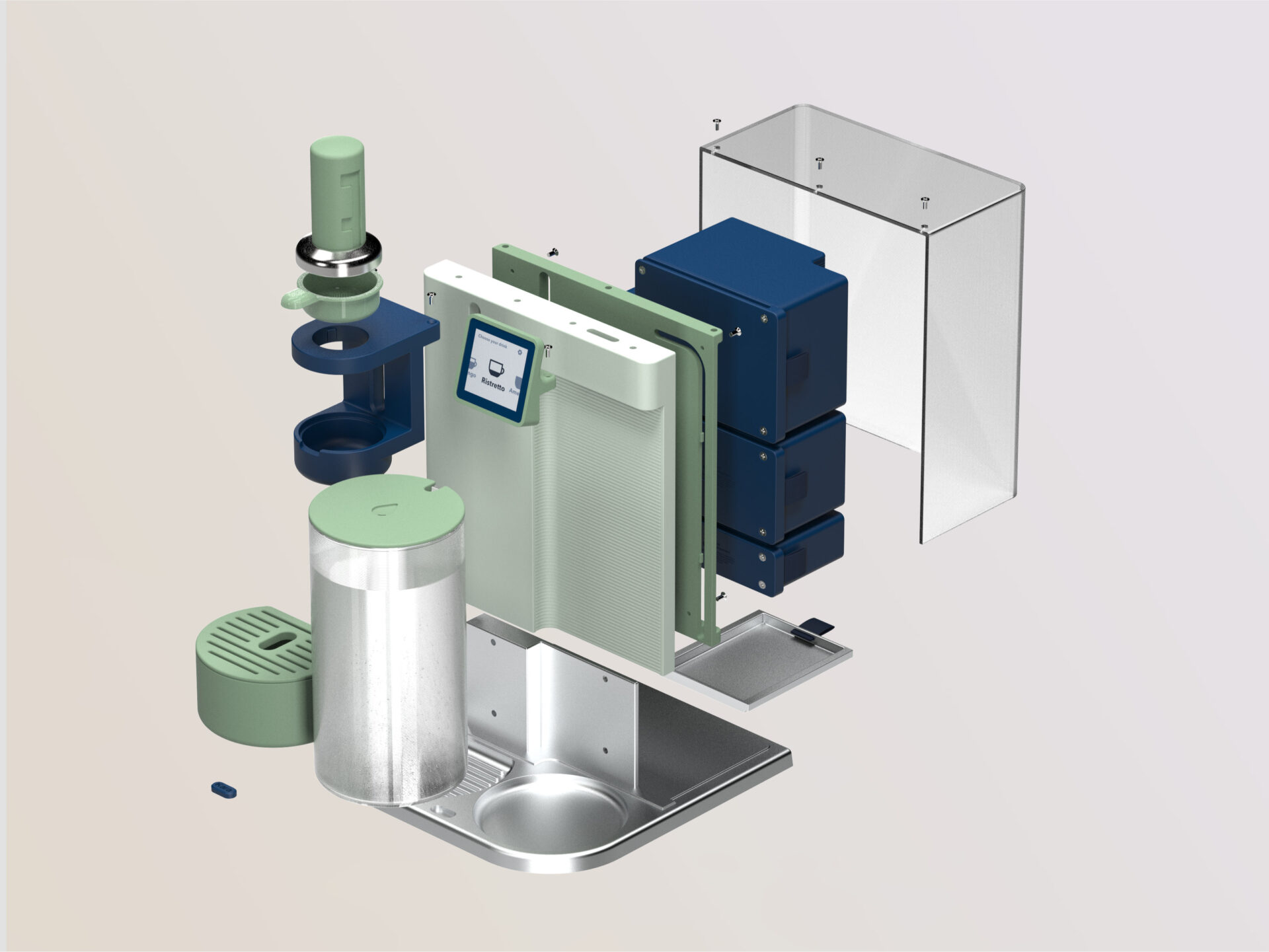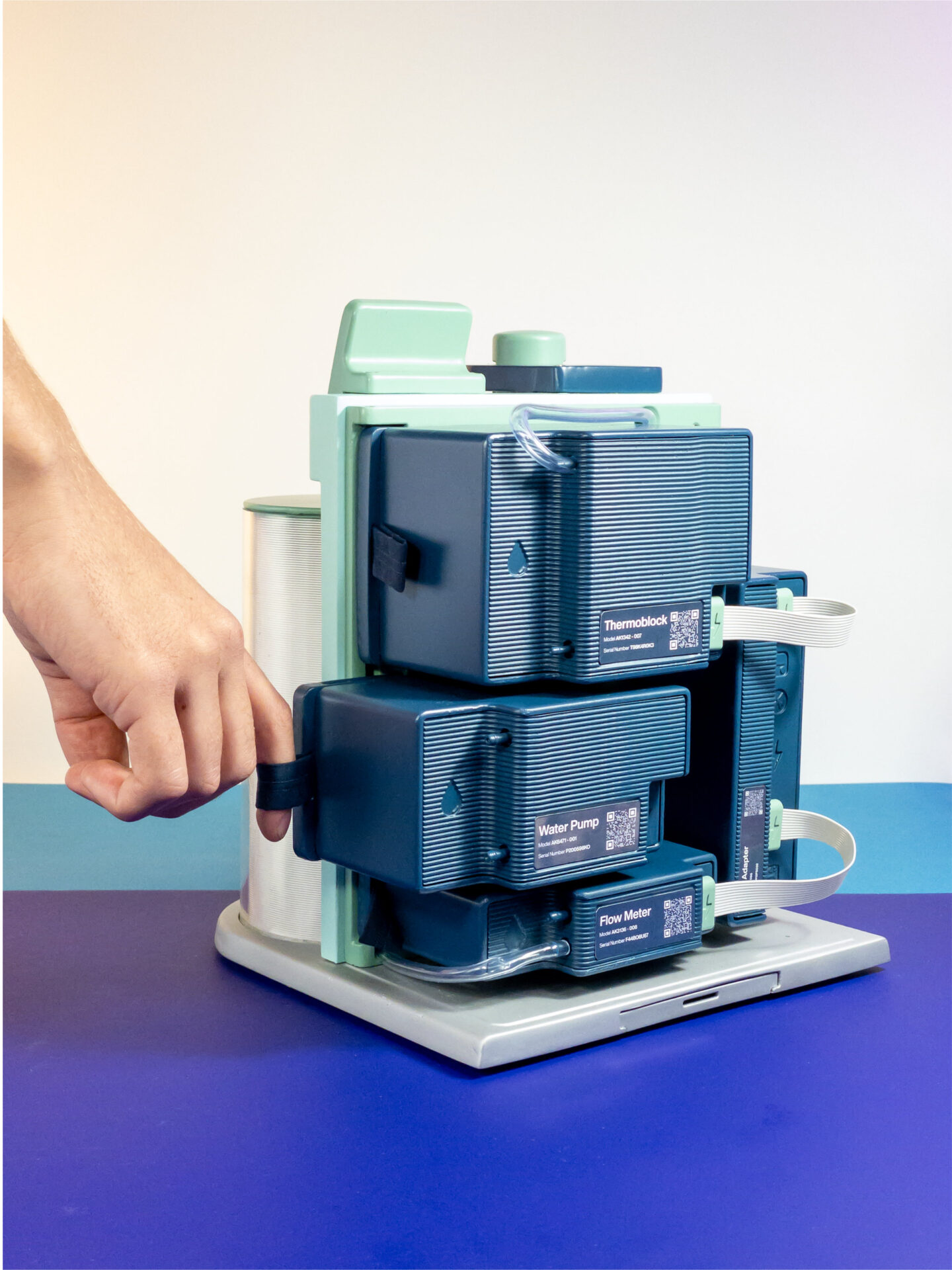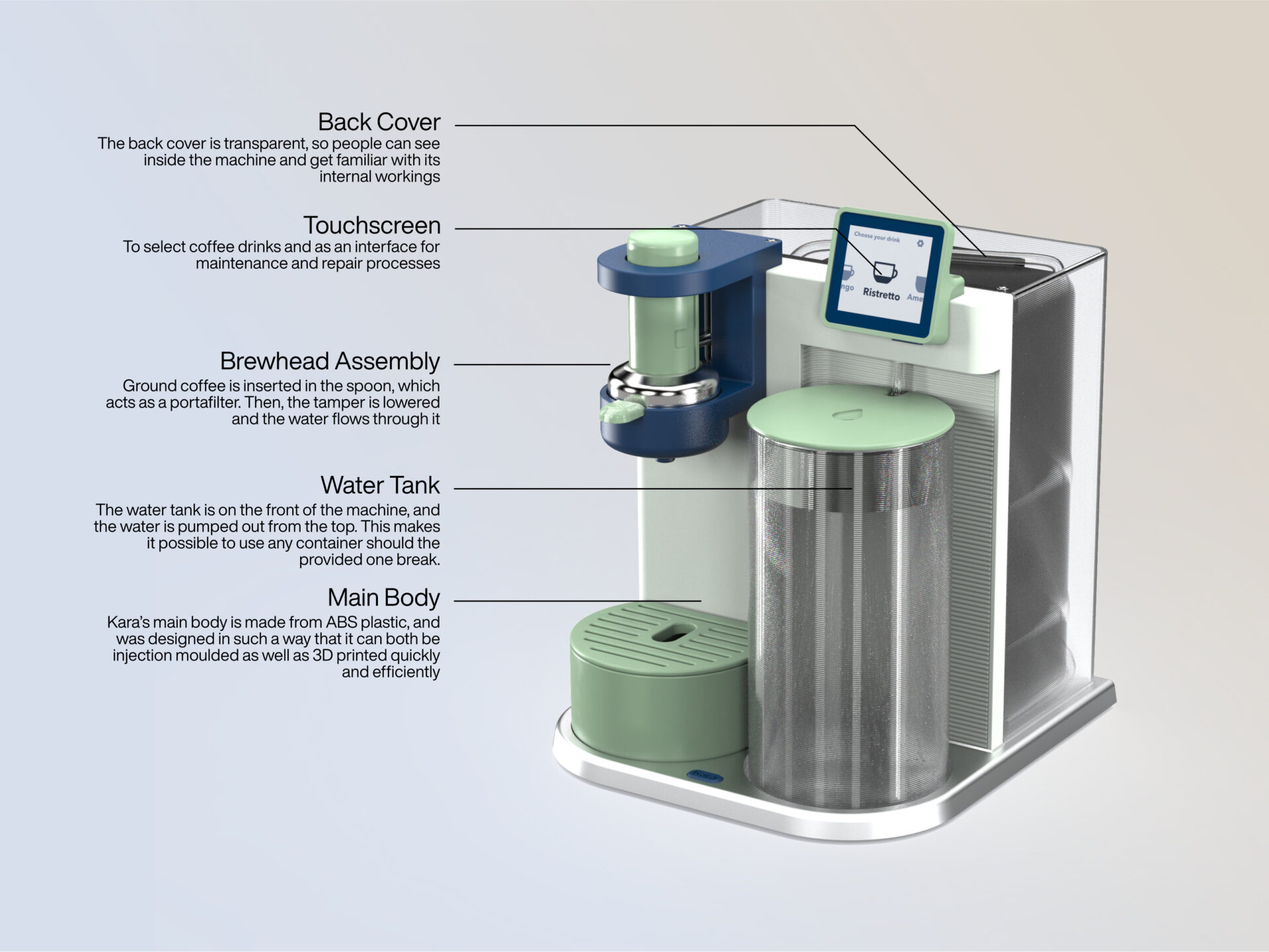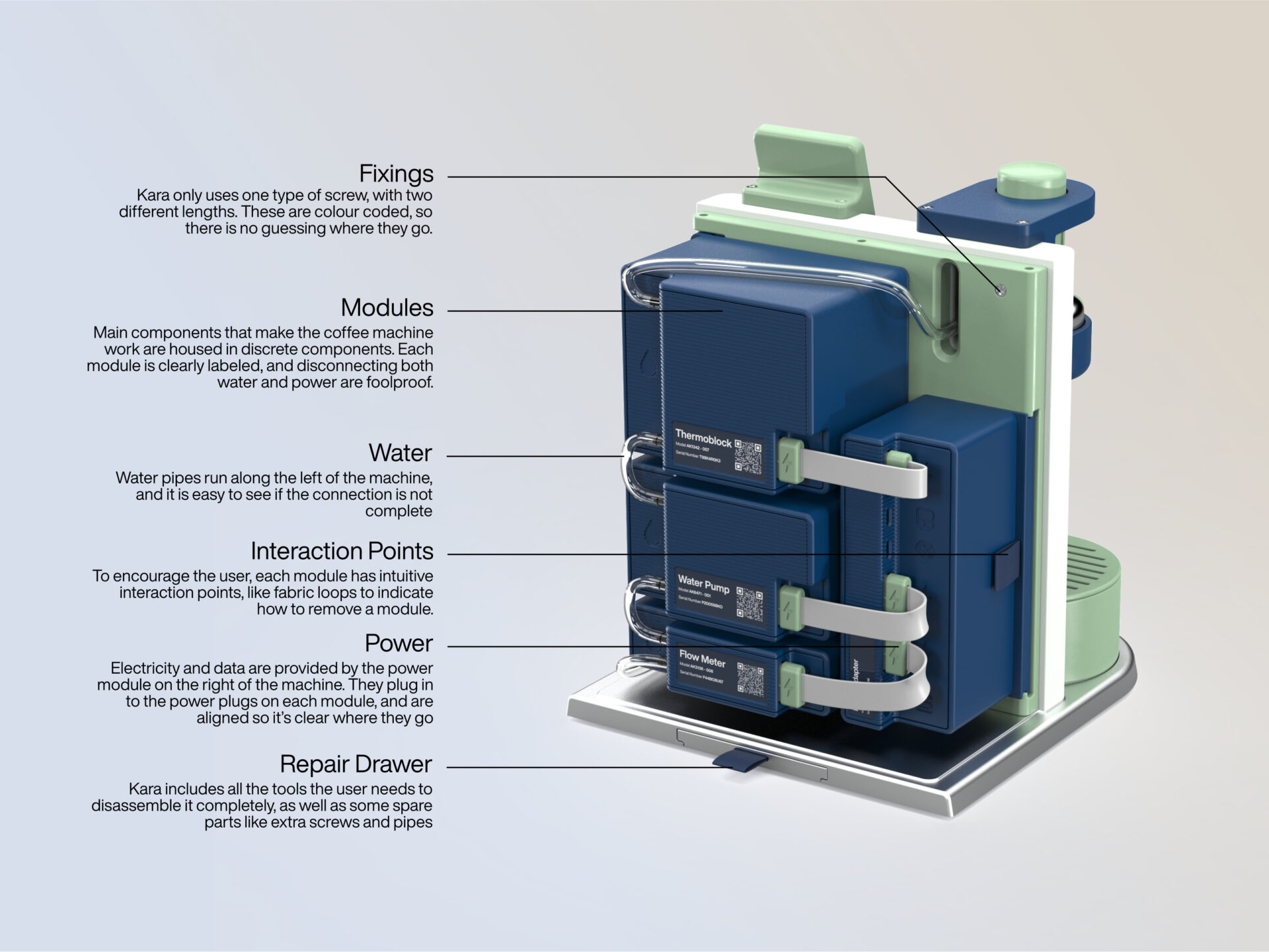Kara
Company Name:
Thomas Mair
Category:
product design
Project description:
To open a broken electrical appliance and replace the right parts is a daunting task. So when your coffee machine eventually gives out, it’s no wonder that instead of fixing it, you replace it. A bad habit, as only one fifth of our discarded electric goods actually get recycled.
Kara is a break from this trend, and shows an alternative way of designing and building electronics. One that looks at the entire life cycle, that encourages maintenance and repairability, and that focuses on keeping as many resources as possible out of landfill.
Repairing the most common failure points does not require specialised tools, and can be done easily and safely by a layman even without much technical knowledge.
The housing is designed so every part can be 3D printed if you don’t have access to original replacement parts, and technical components can be replaced or substituted because they are part of an open system.
Kara also heavily leans into design cues to communicate its repairability. The front is what users interact with day to day, while the back is dedicated to maintenance and repair. Internals aren’t hidden from the user, they are shown off.
Labels indicate clearly when something is in the right place. Aligning magnets make assembly a breeze. And the user manual explains each step simply and logically.
Kara doesn’t intimidate, it makes you want to open it. It is the blueprint for a new design standard for all domestic appliances, one for which repairing is the only logical choice.
What makes it smart / innovative?:
Kara is based on all the same technical components as coffee machines on the market right now, but it reorders them so all the most common failure points are easily accessible. The focus lies on the way we put our products together, not necessarily on the way the components are built themselves.
This comes from the observation that most appliances don’t stop working because everything breaks at the same time, but because in complex machines like these the whole appliance only lasts as long as its weakest part.
If you make it easy to repair or replace these weakest parts, the whole machine can last longer without consuming more resources than necessary.
That way of thinking has been brought into its design language in various forms. The front houses all the main touch points on the day-to-day, which leaves the back dedicated to repair.
It comes with its own screwdriver, and the transparent back cover comes off very easily. Afterwards, you are greeted with all the main components, housed inside modules that are safe to touch and don’t contain dangerous exposed contacts or similar.
It is very clear how to remove them, even without technical knowledge, and the broken part can be sent back and replaced quickly.
All non-mechanic parts can be easily 3D printed in the case a replacement part is needed, so the company doesn’t have to stock every part in perpetuity. And Kara can tell you if something is broken, either on its own display or by connecting a phone.
Every component has its own product passport, which makes tracing its supply chain and eventually repairing or recycling it easier.
Kara is also designed with regulations like the French Repairability index in mind, and things like the Disassembly Map have been mapped out to make sure things are as easy to repair as possible.
Why is it relevant for the final user?:
Kara is relevant because it shows a new way of designing appliances with our planet, and the user in mind. It is a product that explains its mission, and reassures the user that this is something they can own for a lifetime.
It allows them to actually take care of what they own, to service their coffee machine easily and efficiently. By telling them how to take proper care of it so it can stay functional as long as possible, and allowing them to fix it if it actually breaks down, Kara empowers the user and gives them back ownership over what they bought.
In this way it’s more than a functional or technical innovation, but a new way of thinking. Modularity and repairability like this are something that can benefit everyone, and we should strive for them in every appliance or electronic device we design.
Link to the project:
Pdf presentation:

